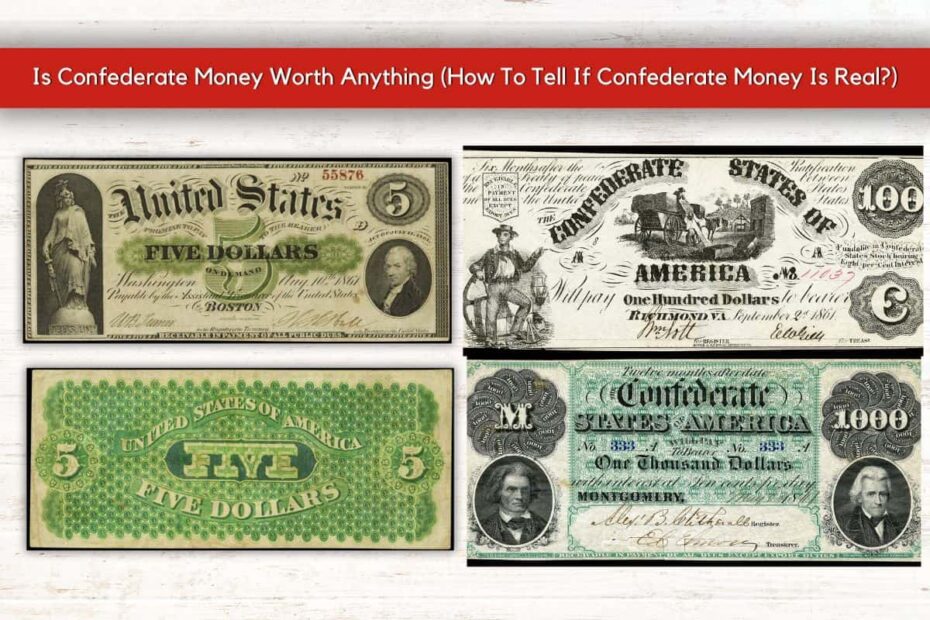The Unexpected Treasure in My Grandfather‘s Attic
I‘ll never forget the moment I discovered my grandfather‘s weathered wooden chest. Dust-covered and tucked away in the corner of his attic, it held a collection that would transform my understanding of American history and numismatics forever.
As I carefully opened the creaking lid, a stack of fragile, yellowed papers caught my eye. These weren‘t just ordinary documents—they were Confederate currency, each note telling a complex story of economic survival, desperation, and resilience during one of America‘s most tumultuous periods.
The Economic Landscape of a Divided Nation
The Confederate States of America‘s monetary system emerged from a perfect storm of economic necessity and political upheaval. When eleven southern states seceded from the Union in 1861, they faced an unprecedented challenge: creating a functional currency without established financial infrastructure.
Unlike modern currency production, Confederate money was born from improvisation and limited resources. The first notes, printed in Montgomery, Alabama, represented more than financial instruments—they were declarations of economic independence.
Printing Challenges and Innovative Solutions
Confederate currency production was a testament to human ingenuity under extreme constraints. With limited access to sophisticated printing equipment, Confederate treasurers and printers developed unique techniques that would fascinate modern collectors.
Hand-cutting edges, using specialized rice paper, and developing intricate anti-counterfeiting designs became hallmarks of Confederate currency. Each note represented not just monetary value, but a statement of regional identity and economic resilience.
The Intricate World of Confederate Currency Valuation
Understanding the value of Confederate money requires more than a simple price guide. It demands a nuanced approach that considers historical context, production techniques, and preservation quality.
Factors Influencing Confederate Currency Value
Several critical elements determine a note‘s market worth:
Production Period Significance
The earliest Confederate notes, particularly those from 1861-1862, command the highest prices. Notes produced in the Montgomery period represent the pinnacle of Confederate monetary craftsmanship.Condition and Preservation
A note‘s physical condition dramatically impacts its value. Collectors seek specimens with minimal wear, original crispness, and no signs of restoration. Uncirculated notes from the early war period can fetch astronomical prices at specialized auctions.Rarity and Historical Significance
Some Confederate notes are exponentially more valuable due to limited print runs or unique historical circumstances. Rare denominations or notes with distinctive design elements can transform an ordinary piece into a collector‘s dream.
Authentication: Separating Treasure from Forgery
The Confederate currency market is rife with counterfeits. During the Civil War, producing fake currency was not just a criminal act but a strategic warfare technique. Both the Confederacy and Union engaged in currency counterfeiting to destabilize each other‘s economies.
Expert Authentication Techniques
Identifying genuine Confederate currency requires a combination of technical knowledge and historical understanding:
- Paper Composition Analysis: Authentic notes used unique rice paper with distinct texture and fragility.
- Ink Examination: Original notes featured hand-applied iron gall ink, which oxidizes and changes color over time.
- Edge Characteristics: Hand-cut edges with slight irregularities indicate authenticity.
- Signature Verification: Handwritten signatures using period-appropriate techniques.
Personal Collection Insights: More Than Monetary Value
My grandfather‘s collection taught me that Confederate currency represents more than financial artifacts. Each note encapsulates a moment of human struggle, hope, and resilience.
Some collectors view these notes as mere historical curiosities. However, true numismatic enthusiasts understand they are tangible connections to a complex historical narrative.
Ethical Collecting Considerations
As collectors, we bear a responsibility to approach Confederate currency with nuanced historical understanding. These notes represent a painful period of American history, and collecting them requires sensitivity and respect.
Market Trends and Investment Potential
The Confederate currency market has evolved significantly in recent decades. What was once considered worthless paper now represents a sophisticated collecting ecosystem with global interest.
Auction prices for rare specimens can range from a few hundred dollars to tens of thousands, depending on condition, rarity, and historical significance.
Preservation: Protecting Historical Artifacts
Proper preservation is crucial for maintaining Confederate currency‘s value and historical integrity. Specialized archival techniques, including acid-free storage, controlled humidity, and minimal handling, can protect these fragile artifacts for future generations.
Conclusion: A Living Historical Legacy
Confederate currency is more than a collecting niche—it‘s a window into a pivotal moment of American transformation. Each note represents a story of economic innovation, survival, and human resilience.
For serious collectors, the journey is never just about monetary value. It‘s about understanding the complex tapestry of human experience woven into these delicate pieces of paper.
Your Next Steps
If you‘re intrigued by Confederate currency, I recommend:
- Connecting with specialized numismatic associations
- Attending historical currency exhibitions
- Consulting expert appraisers
- Continuing your historical research
Remember, every note has a story. Your job as a collector is to listen, learn, and preserve.
